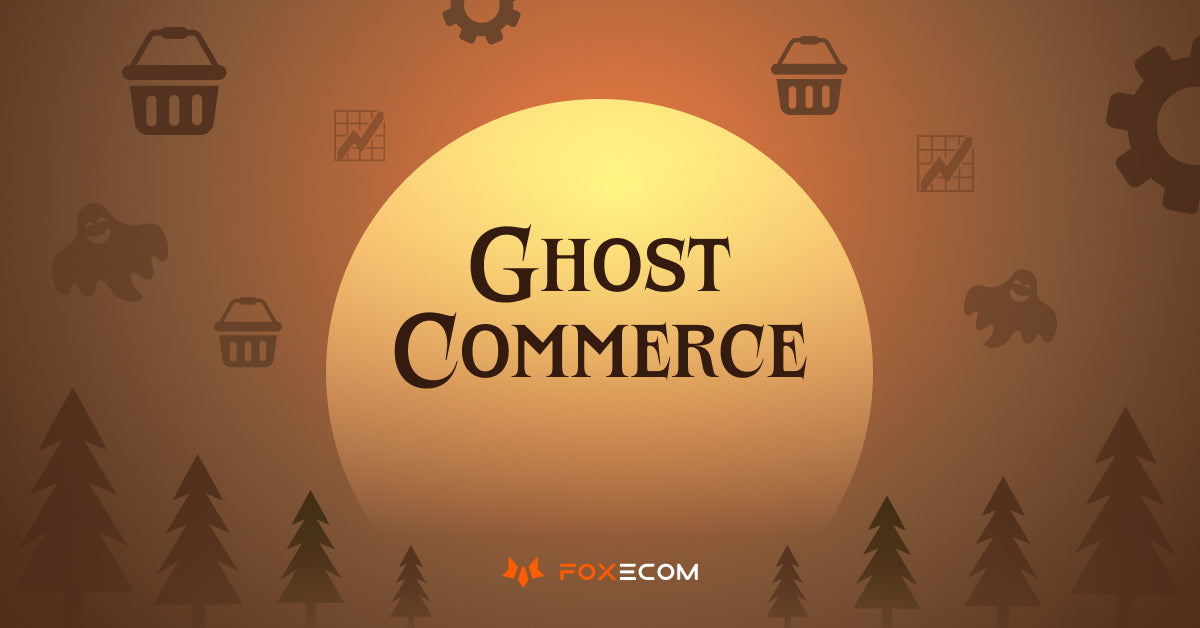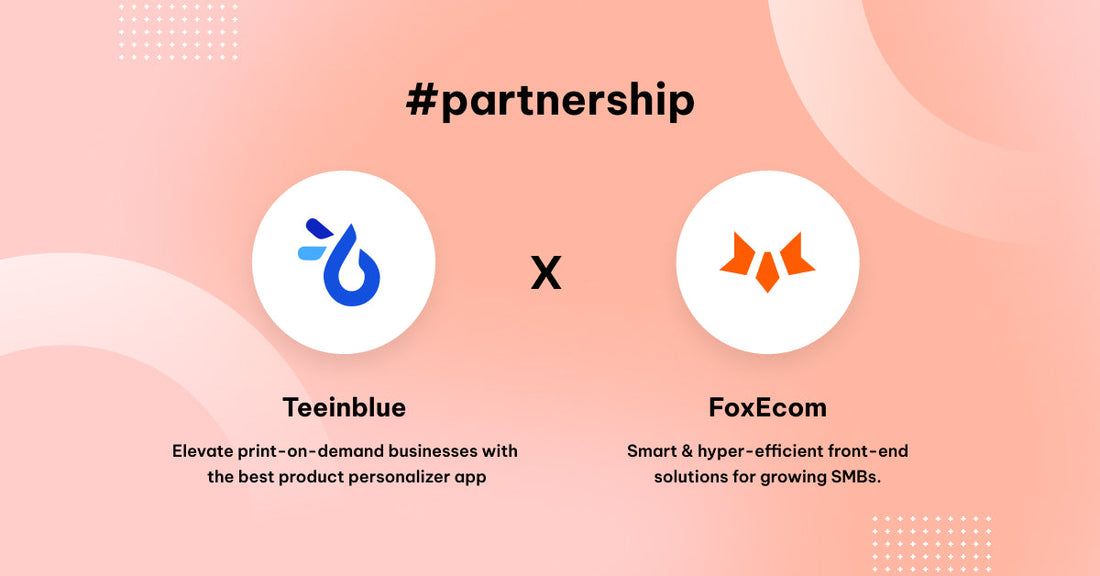In the bustling world of online entrepreneurship, new trends emerge faster than you can say "virtual checkout." One such trend that's been making waves lately is ghost commerce. But what is ghost commerce, how does ghost commerce work, why should you pay attention to ghost commerce, and how to start ghost commerce as a savvy entrepreneur?
Buckle up, because we're about to embark on a journey into the realm of ghost commerce and uncover how you can dive into this burgeoning phenomenon with Shopify by your side.
What Is Ghost Commerce?
At its core, ghost commerce can be defined as "the business of selling other companies' goods using one's online presence as the primary sales channel". As the "ghost" in ghost commerce, these entrepreneurs instead act as middlemen of sorts by using their marketing and branding expertise to connect eager consumers with popular products.
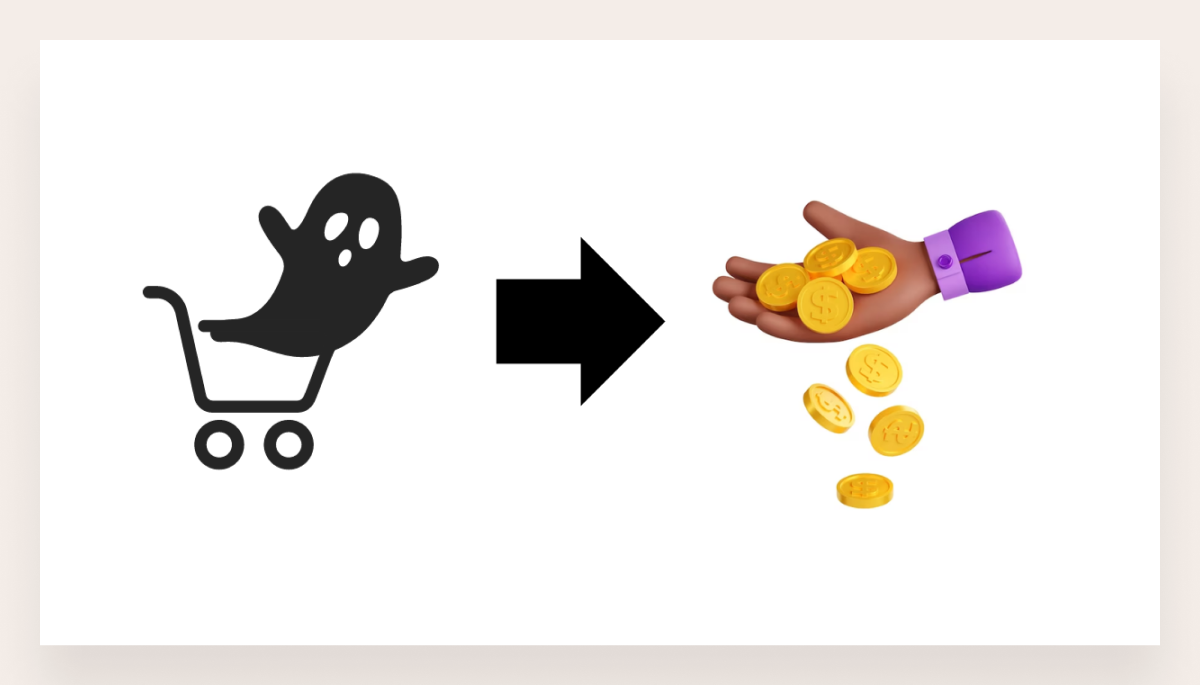
Image source: Manifest AI Blog
Imagine running a store where the shelves are always stocked, but you never have to worry about restocking or storage space. That's the magic of ghost commerce. It's the future of retail that is lean, agile, and hyper-focused on marketing and branding.
The future of ghost commerce looks promising with an estimated market size of $1 trillion by 2030. As social selling gains more traction through platforms like Instagram, TikTok, and Facebook, it's opening up new opportunities for businesses to reach audiences in a creative, visually-driven way. And with supply chain issues still ongoing, the inventory-free model of ghost commerce remains appealing.
Ghost Commerce vs. eCommerce
Ghost commerce often gets mistaken for traditional eCommerce, but there's a crucial difference. While eCommerce businesses juggle inventory, fulfillment, and logistics, ghost commerce skips the warehouse altogether. Instead, it thrives on clever marketing strategies and building a brand that resonates with customers. This separates it from other inventory-free models such as dropshipping and print-on-demand (POD) as well.
Print-on-demand (POD) is a popular inventory-free model for creating and selling custom products. For those interested in starting a POD business, here’s a helpful guide on print-on-demand to get started.
Dropshipping still involves the logistics of processing orders, whereas ghost entrepreneurs act more as a face for products. Print-on-demand also makes physical products so it isn't a true representation of ghost commerce's online promotional role.
In summary, while ghost commerce shares some traits with other digital business models, its true strength comes from the ability to profit from popular products solely through creative marketing - without the headaches of stock-keeping or delivery fulfillment.
How Does Ghost Commerce Work?
Key Characteristics of Ghost Commerce
To truly understand ghost commerce, it's important to understand its defining features. Here's a breakdown of the 3 main traits that characterize this unique business model:
- There's no inventory: Say goodbye to the headaches of inventory management. Ghost commerce operates on a lean, inventory-free model, where entrepreneurs partner with suppliers to fulfill orders directly to customers. This streamlined approach eliminates the need for warehousing, storage costs, and inventory risk, allowing entrepreneurs to focus their resources on other aspects of their business.
- Trust and credibility are important: With no physical products to showcase, trust and credibility become paramount. Establishing a strong brand presence, fostering transparent communication, and delivering exceptional customer service are essential for building trust with your audience. After all, in the digital realm, reputation is everything given that nearly 50% of shoppers would likely buy more from brands they trust.
- Marketing and branding are heavily focused on: Ghost commerce isn't just about selling products, it's about crafting compelling brand narratives, cultivating loyal communities, and creating memorable experiences for your customers. From eye-catching visuals to engaging storytelling, every aspect of marketing and branding is meticulously planned to resonate with your target audience and differentiate your brand from the competition.

Image source: NogenTech
By embracing these key characteristics, ghost commerce entrepreneurs can unlock the full potential of this innovative business model and carve out their own unique space in the competitive eCommerce landscape. With a keen focus on innovation, creativity, and customer-centricity, the possibilities are endless in the world of ghost commerce.
Pros and Cons of Ghost Commerce
Pros of Ghost Commerce
- Passive income potential: Once a strong customer base is established through marketing, sales may continue with less constant effort. This allows for passive earnings over time.
- Flexibility: Since no inventory is owned, ghost entrepreneurs can easily test new products or change their offerings based on trends without risk.
- Scalability: The model is highly scalable since promotion, not fulfillment, drives sales. As marketing strategies improve, revenue can grow quickly without heavy infrastructure investment.
Cons of Ghost Commerce
- Lower profit margins: Per item earnings may be slimmer than traditional retail since suppliers set base costs. Volume is needed to see bigger profits.
- Highly competitive field: Low barriers to entry in ghost commerce mean plenty of competitors. It requires consistent innovation to maintain an edge.
How to Start Ghost Commerce with Shopify
Ready to embark on your ghost commerce journey? With Shopify as your trusted companion, launching your online store has never been easier.
Let's break down the process into 6 simple steps to kickstart your ghost commerce business and unlock its full potential:
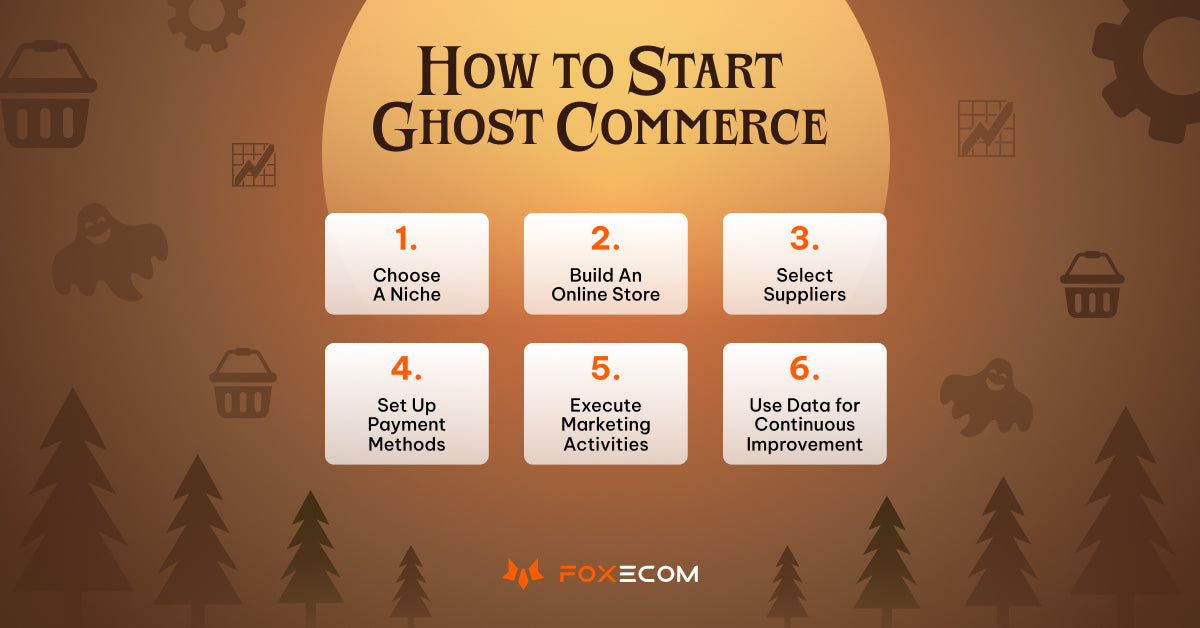
6 Steps to Launch A Ghost Commerce Business
1. Choose A Niche
Selecting the right niche is the cornerstone of a successful ghost commerce business. A well-chosen niche allows you to focus your efforts, target a specific audience, and differentiate yourself in a crowded market. Without a niche, you risk blending into the background and struggling to attract customers.
You should start by conducting a thorough market analysis to identify potential niches that align with your interests, expertise, and market demand. Some popular tools are Google Trend, Answer the Public, social media (Facebook, Instagram, TikTok, etc), online marketplace (Amazon, eBay, Etsy, etc). Look for gaps in the market, underserved audiences, or emerging trends that present growth opportunities. Consider factors such as competition, audience size, and profitability when evaluating potential niches.
Still unclear about how to find your niche? Find the guidelines on targeting profitable niches here.

Image source: Adloonix
Pro ghost commerce tip: don't just follow the crowd, let’s carve out your own niche. Look for unique angles, untapped markets, or niche audiences that you can serve better than your competitors. For example, instead of selling generic apparel, consider focusing on sustainable fashion for eco-conscious consumers or niche hobbies like rock climbing or beekeeping.
2. Build An Online Store
Your online store serves as the virtual storefront for your ghost commerce business. It's where customers will discover your products, make purchases, and interact with your brand. A well-designed and user-friendly online store is essential for attracting and retaining customers, driving conversions, and establishing credibility in the competitive eCommerce landscape.
Firstly, you need to choose a reliable eCommerce platform that offers robust features, customization options, and scalability to build your ghost commerce store. Shopify stands out as an efficient platform for launching a ghost commerce business, offering user-friendly interfaces, seamless integration with third-party apps and services, and comprehensive support resources.
After that, you should utilize Shopify's intuitive tools and templates to design a visually appealing and easy-to-navigate online store that reflects your brand identity and resonates with your target audience.
Pro ghost commerce tip: Leverage tools like Foxify Smart Page Builder to streamline the process of building and customizing your online store on Shopify. Foxify offers a range of features and functionalities, including one-click editor, 80+ sales-winning templates, and advanced page performance reports, making it easier than ever to create a professional-looking website without the need for coding or technical expertise.
With a huge template library on Foxify, you can easily browse your preferred ones in whichever industry you are.

Image source: Foxify Demo
3. Select Suppliers
Choosing the right suppliers is critical for the success of your ghost commerce business. Suppliers play a crucial role in fulfilling orders, maintaining product quality, and delivering exceptional customer experiences. Partnering with reliable and reputable suppliers ensures smooth operations, timely order fulfillment, and customer satisfaction.
To evaluate suppliers, you should consider factors such as product quality, pricing, shipping times, reliability, and customer service. Look for suppliers with a proven track record of excellence and positive reviews from other businesses. Reach out to multiple suppliers and request samples to evaluate the quality of their products firsthand. Additionally, consider factors such as minimum order quantities, payment terms, and return policies when selecting suppliers.
Pro ghost commerce tip: Establish clear communication channels and build strong relationships with your suppliers. Additionally, diversify your supplier base to mitigate risks and reduce dependency on a single supplier.
4. Set Up Payment Methods
Setting up payment methods is crucial for facilitating seamless transactions and providing a frictionless checkout experience for your customers. By offering a variety of payment options, you cater to diverse customer preferences, increase conversion rates, and maximize revenue potential. Additionally, secure and reliable payment processing instills trust and confidence in your customers, leading to repeat purchases and long-term loyalty.
Start by choosing a payment gateway that integrates seamlessly with your eCommerce platform and supports a wide range of payment methods, including credit cards, digital wallets, and alternative payment options.
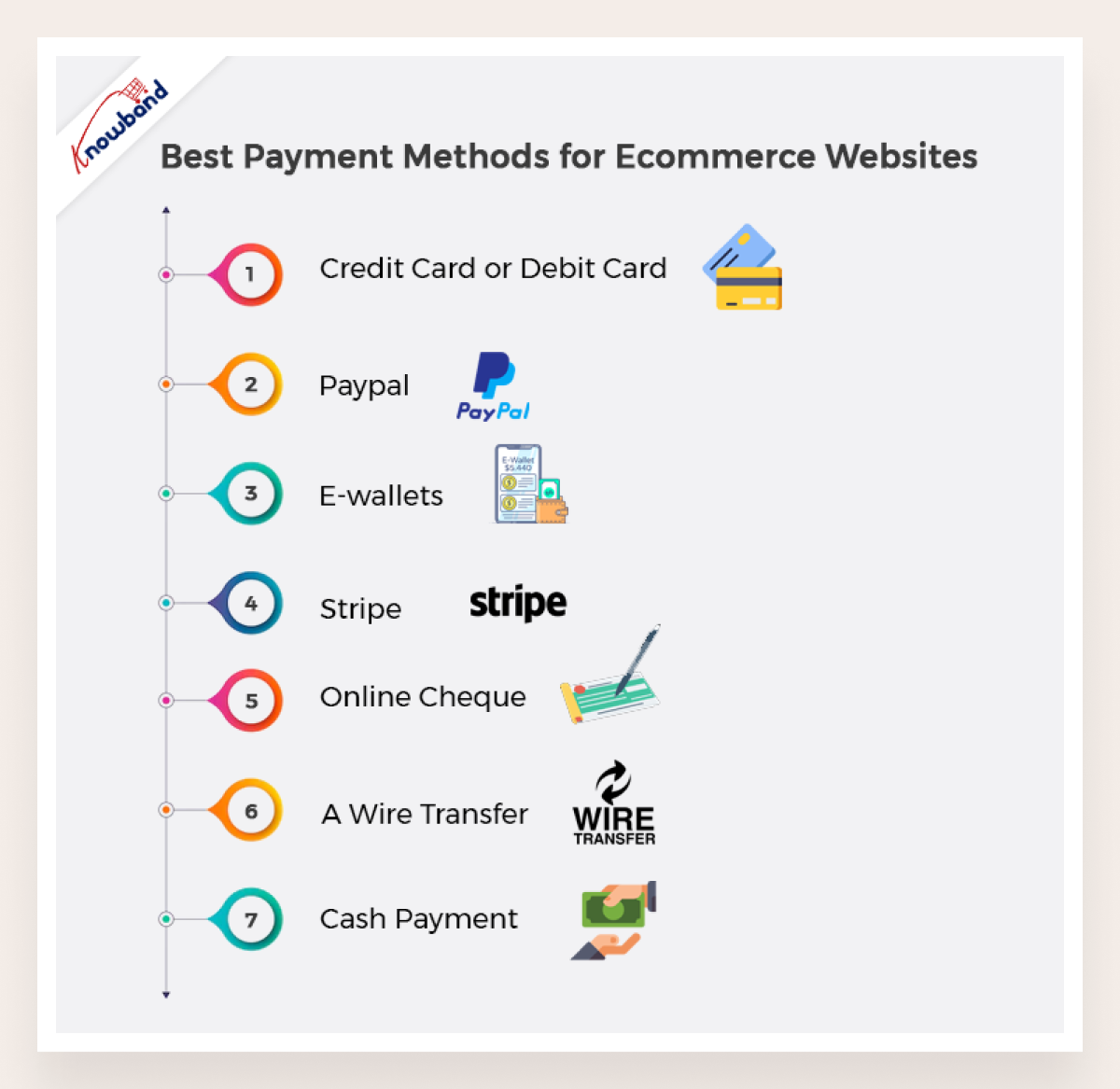
Image source: Knowband
Here’s a list of online payment gateways and payment provider integrations on Shopify for your reference.
Then, configure your payment settings, including currency options, payment processing fees, and refund policies, to align with your business needs and customer expectations.
Pro ghost commerce tip: Offer multiple payment options to accommodate diverse customer preferences and increase conversion rates. In addition to traditional credit card payments, consider integrating popular digital wallets such as PayPal, Apple Pay, and Google Pay, as well as alternative payment methods like Buy Now, Pay Later (BNPL) services. As MONEI stated, providing flexible payment options enhances the shopping experience, reduces cart abandonment rates, and encourages impulse purchases.
5. Execute marketing activities
Marketing is the lifeblood of any successful ghost commerce business. Effective marketing activities are essential for driving traffic to your online store, increasing brand awareness, and generating sales. By implementing a comprehensive marketing strategy, you can attract new customers, engage existing ones, and build a loyal customer base that fuels sustainable growth.
Need some inspiration? Check these 5 marketing strategies to maximize revenue.
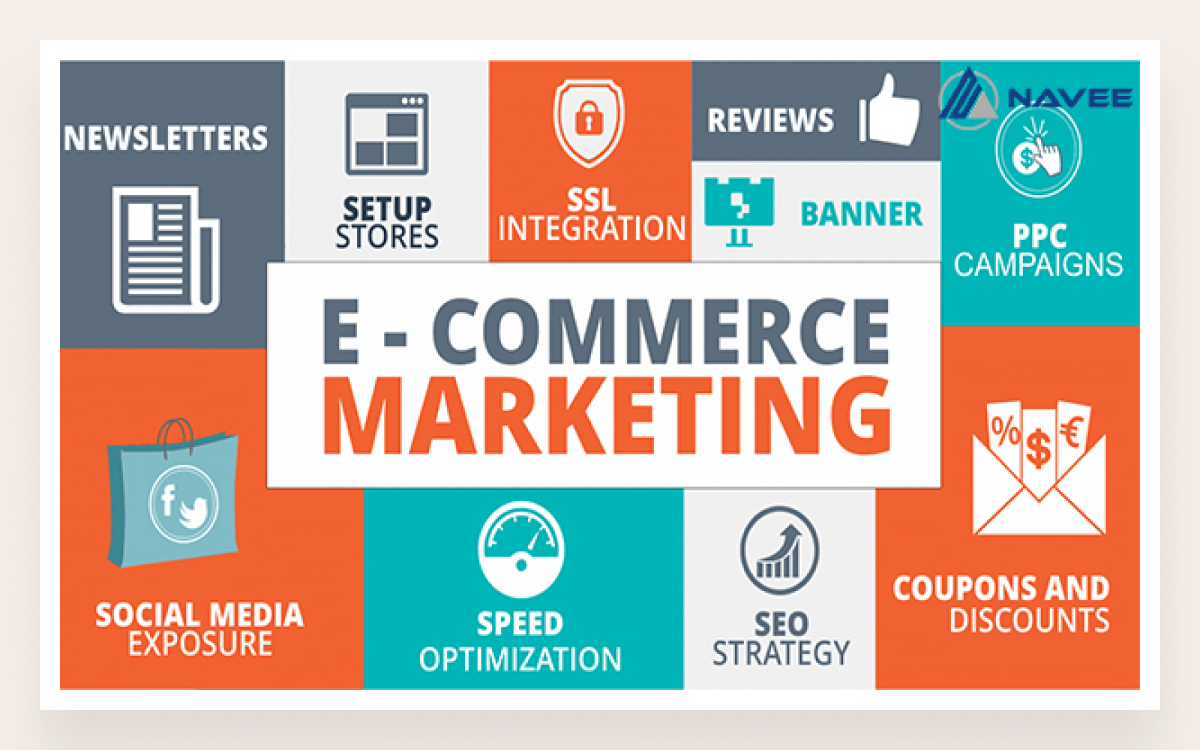
Image source: spiceworks
Pro ghost commerce tip: Focus on building relationships and fostering engagement with your audience rather than solely focusing on sales. Provide valuable content, educational resources, and entertaining experiences that enrich your customers' lives and establish your brand as a trusted authority in your niche. Encourage user-generated content, customer reviews, and social proof to build credibility and trust with potential customers.
6. Use Data for Continuous Improvement
In the fast-paced world of ghost commerce, data is your most valuable asset. By leveraging data analytics and insights, you can gain valuable intelligence into customer behavior, sales trends, marketing effectiveness, and website performance. Data-driven decision-making enables you to identify opportunities for improvement, optimize your strategies, and drive growth for your business.
Start by implementing robust analytics tools and tracking mechanisms to collect data across all aspects of your ghost commerce business. Utilize built-in analytics features provided by your eCommerce platform, such as Shopify's analytics dashboard, to monitor key metrics such as website traffic, conversion rates, average order value, and customer demographics. Additionally, integrate third-party analytics tools such as Google Analytics to gain deeper insights into user behavior, traffic sources, and conversion paths.
Pro ghost commerce tip: Don't just collect data, you need to interpret it, analyze it, and take action based on it. If you don’t know how to start, firstly check out this article on essential eCommerce metrics and KPIs for success. By using Foxify, you can not only build stunning pages but also track their performance with Analytics features, where your data is managed and visualized for better analysis. By continuously monitoring and analyzing data, you can make informed decisions, iterate on your approach, and stay ahead of the competition.
3 Pro-tips for Effective Ghost Commerce on Shopify
Launching a ghost commerce business is just the beginning, sustaining success requires strategic planning, innovation, and a relentless focus on delivering value to your customers. Here are 3 pro tips to elevate your ghost commerce game and take your Shopify store to new heights:
Invest in A Strong Online Presence
Your online presence is the first impression customers have of your brand. Given that 60% of shoppers will decide to stay or leave the eCommerce site within 5 seconds, the first impression can make or break their purchasing decision.
Invest in creating a visually appealing and user-friendly website that reflects your brand identity and resonates with your target audience. From sleek design to intuitive navigation, every aspect of your online store should exude professionalism and credibility. Leverage Shopify's customizable themes and plugins to create a seamless and memorable shopping experience for your customers.
Focus on Customer Experience
Did you know that 73% of consumers point to customer experience as an important factor in their purchase decisions? Therefore, customer experience is king not only for ghost commerce but also for the entire world of eCommerce.
Your success hinges on your ability to delight and satisfy customers at every touchpoint. From the moment they land on your website to the post-purchase experience, prioritize delivering exceptional service and exceeding expectations. Offer fast and reliable shipping, provide responsive customer support, and personalize interactions to make each customer feel valued and appreciated. By emphasizing customer experience, you'll build trust, foster loyalty, and turn first-time buyers into lifelong advocates for your brand.
Collaborate with Influencers
Influencer marketing has emerged as a powerful tool for driving brand awareness and engagement in the digital age. Partnering with influencers who align with your brand values and resonate with your target audience can help you reach new customers and amplify your message across social media platforms.
Identify influencers in your niche with a strong following and authentic engagement, and forge mutually beneficial partnerships that leverage their influence to promote your products. Whether it's through sponsored content, product reviews, or brand collaborations, influencer marketing can be a game-changer for your ghost commerce business.
Learn more about how to utilize the power of influencer marketing.
Ghost Commerce: Wrapping Up
In conclusion, ghost commerce represents a paradigm shift in the world of eCommerce, which is a lean, agile, and innovative approach to online retail that empowers entrepreneurs to thrive in the digital age.
So, whether you're a seasoned entrepreneur looking to diversify your portfolio or a budding visionary ready to make your mark, ghost commerce offers an exciting and lucrative opportunity to unleash your entrepreneurial spirit and chart your own path to success. With Shopify as your trusted partner and a strategic approach to branding, marketing, and customer experience, the sky's the limit in the world of ghost commerce.
